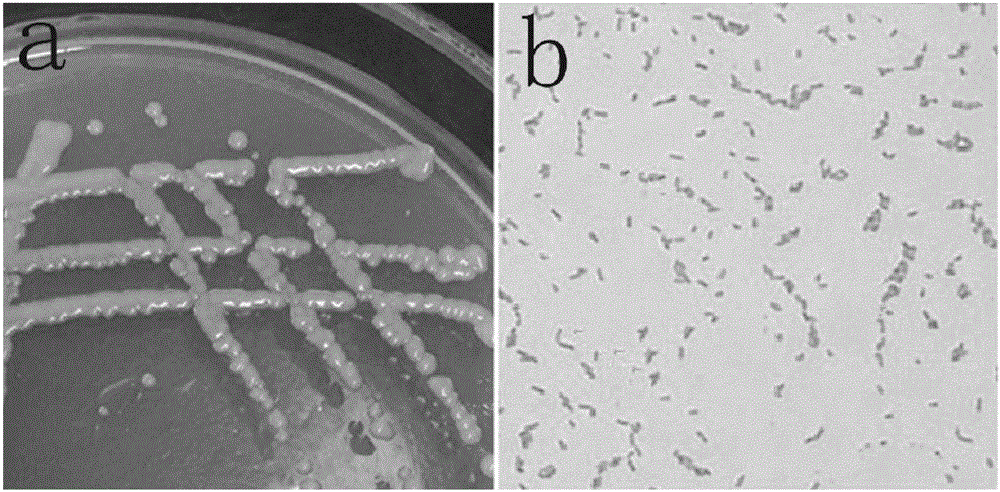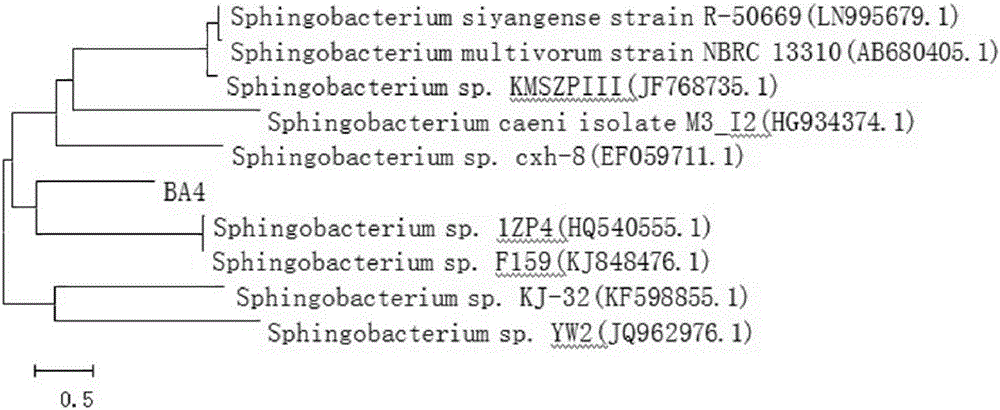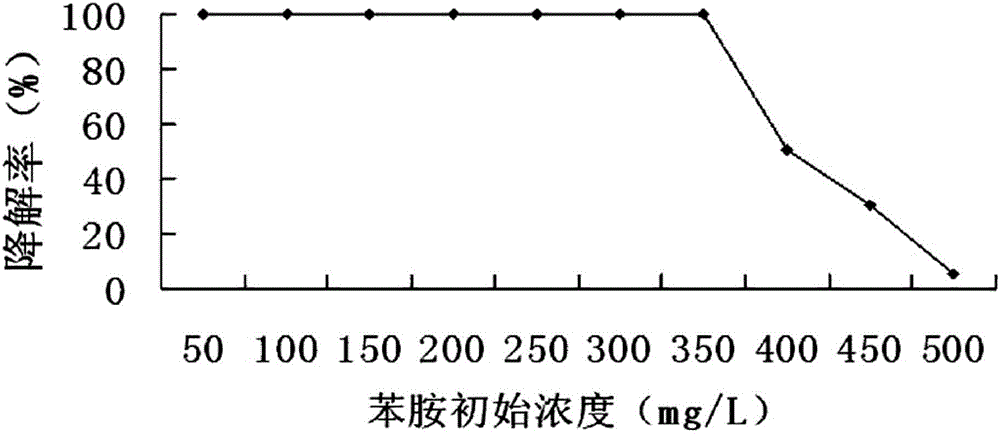Sphingobacterium sp. with aniline degradation capability and application thereof
A technology of Sphingobacter and Sphingobacter, which is applied in the field of Sphingobacter to achieve the effects of broad application prospects, high degradation rate and tolerance concentration, and safe use
- Summary
- Abstract
- Description
- Claims
- Application Information
AI Technical Summary
Problems solved by technology
Method used
Image
Examples
Embodiment 1
[0027] A Sphingobacterium with the ability to degrade aniline. The 16S rDNA of Sphingobacterium is identified as belonging to the genus Sphingobacterium (Sphingobacterium sp.), and the applicant numbered it BA-4; it has been preserved in the China General Microorganisms Collection Management Center (China General Microbiological Culture Collection Center, CGMCC), Address: No. 3, Yard 1, Beichen West Road, Chaoyang District, Beijing, Culture Collection Center, Institute of Microbiology, Chinese Academy of Sciences, Zip Code: 100101, Collection Number: CGMCC No.: 13428; it is short rod-shaped and belongs to Gram-negative bacteria; it forms round light yellow colonies on beef extract peptone solid medium, with moist surface and neat edges, easy to pick.
[0028] The sphingobacterium capable of degrading aniline in the present invention is derived from a sewage ditch sludge in Qufu City, Shandong Province, obtained through domestication, separation and purification of aniline, and ...
Embodiment 2
[0034] A Sphingobacterium with the ability to degrade aniline. The 16S rDNA of Sphingobacterium is identified as belonging to the genus Sphingobacterium (Sphingobacterium sp.), and the applicant numbered it BA-4; it has been preserved in the China General Microorganisms Collection Management Center (China General Microbiological Culture Collection Center, CGMCC), Address: No. 3, Yard 1, Beichen West Road, Chaoyang District, Beijing, Culture Collection Center, Institute of Microbiology, Chinese Academy of Sciences, Zip Code: 100101, Collection Number: CGMCC No.: 13428; it is short rod-shaped and belongs to Gram-negative bacteria; it forms round light yellow colonies on beef extract peptone solid medium, with moist surface and neat edges, easy to pick.
[0035] The sphingobacterium capable of degrading aniline in the present invention is derived from a sewage ditch sludge in Qufu City, Shandong Province, obtained through domestication, separation and purification of aniline, and ...
Embodiment 3
[0041]A Sphingobacterium with the ability to degrade aniline. The 16S rDNA of Sphingobacterium is identified as belonging to the genus Sphingobacterium (Sphingobacterium sp.), and the applicant numbered it BA-4; it has been preserved in the China General Microorganisms Collection Management Center (China General Microbiological Culture Collection Center, CGMCC), Address: No. 3, Yard 1, Beichen West Road, Chaoyang District, Beijing, Culture Collection Center, Institute of Microbiology, Chinese Academy of Sciences, Zip Code: 100101, Collection Number: CGMCC No.: 13428; it is short rod-shaped and belongs to Gram-negative bacteria; it forms round light yellow colonies on beef extract peptone solid medium, with moist surface and neat edges, easy to pick.
[0042] The sphingobacterium capable of degrading aniline in the present invention is derived from a sewage ditch sludge in Qufu City, Shandong Province, obtained through domestication, separation and purification of aniline, and c...
PUM
 Login to View More
Login to View More Abstract
Description
Claims
Application Information
 Login to View More
Login to View More - R&D Engineer
- R&D Manager
- IP Professional
- Industry Leading Data Capabilities
- Powerful AI technology
- Patent DNA Extraction
Browse by: Latest US Patents, China's latest patents, Technical Efficacy Thesaurus, Application Domain, Technology Topic, Popular Technical Reports.
© 2024 PatSnap. All rights reserved.Legal|Privacy policy|Modern Slavery Act Transparency Statement|Sitemap|About US| Contact US: help@patsnap.com










